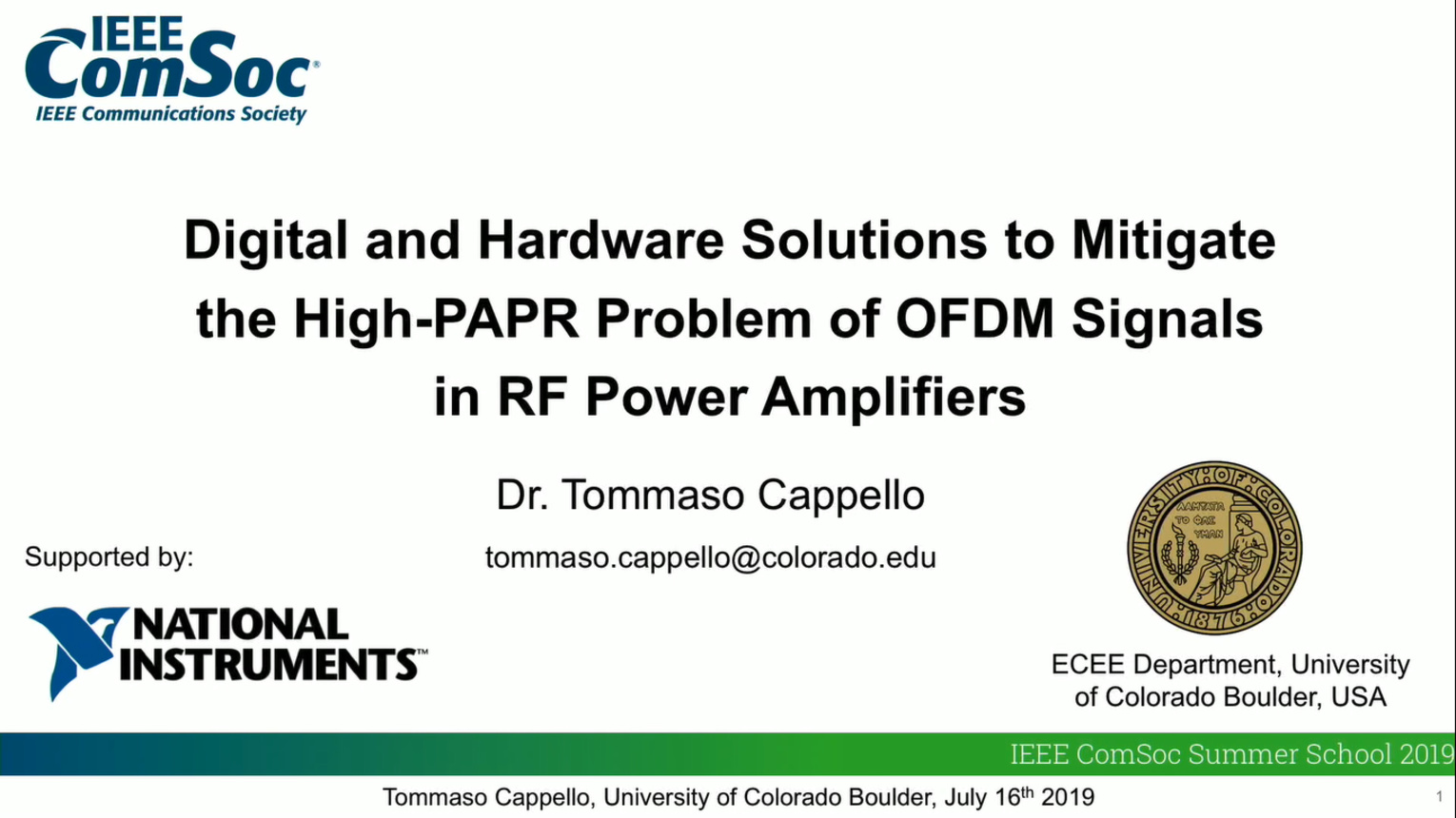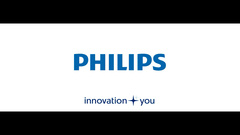
This video program is a part of the Premium package:
Digital and hardware solutions to mitigate the high PAPR problem of OFDM signals signals in RF power amplifiers
- IEEE MemberUS $4.99
- Society MemberUS $0.00
- IEEE Student MemberUS $4.99
- Non-IEEE MemberUS $9.99
Digital and hardware solutions to mitigate the high PAPR problem of OFDM signals signals in RF power amplifiers
From the 2019 IEEE ComSoc Summer School at National Instruments, Austin, TX, USA, Dr. Tommaso Cappello, Rsearch Associate, UC Boulder, discusses digital and hardware techniques to mitigate the high peak-to-average-ratio (PAPR) problem in wideband OFDM signals (5G). The high-PAPR problem can be mitiagated through digital baseband techniques such as digital pre-distortion (DPD), crest factor reductio, and mixed approaches. However, due to the demanding requirements in both high PAPR and bandwidth in 5G systems, a mixed combination of digital and analog techniques is key in order to achieve efficient amplification of such signals. To this aim, envelope tracking, outphasing and the recently introduced load-modulated balanced amplifier provides possible benefits with such signals. In this talk, amplifier topologies and digital solutions are compared theoretically and experimentally by using NI hardware and software platforms.
From the 2019 IEEE ComSoc Summer School at National Instruments, Austin, TX, USA, Dr. Tommaso Cappello, Rsearch Associate, UC Boulder, discusses digital and hardware techniques to mitigate the high peak-to-average-ratio (PAPR) problem in wideband OFDM signals (5G). The high-PAPR problem can be mitiagated through digital baseband techniques such as digital pre-distortion (DPD), crest factor reductio, and mixed approaches. However, due to the demanding requirements in both high PAPR and bandwidth in 5G systems, a mixed combination of digital and analog techniques is key in order to achieve efficient amplification of such signals. To this aim, envelope tracking, outphasing and the recently introduced load-modulated balanced amplifier provides possible benefits with such signals. In this talk, amplifier topologies and digital solutions are compared theoretically and experimentally by using NI hardware and software platforms.
 Cart
Cart Create Account
Create Account Sign In
Sign In





